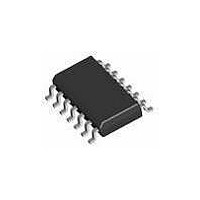1510S14-U THAT Corporation, 1510S14-U Datasheet - Page 4

1510S14-U
Manufacturer Part Number
1510S14-U
Description
Audio Amplifiers High-Perform. Audio Preamp 6dB SO14
Manufacturer
THAT Corporation
Datasheet
1.1512S08-U.pdf
(8 pages)
Specifications of 1510S14-U
Product
General Purpose Audio Amplifiers
Available Set Gain
0 dB to 70 dB
Common Mode Rejection Ratio (min)
60 dB
Thd Plus Noise
0.0005 %
Operating Supply Voltage
+/- 5 V to +/- 20 V
Supply Current
6 mA
Maximum Operating Temperature
+ 85 C
Mounting Style
SMD/SMT
Audio Load Resistance
2 KOhms
Input Bias Current (max)
14 uA
Input Offset Voltage
+/- 13 V
Input Signal Type
Differential
Minimum Operating Temperature
- 40 C
Output Signal Type
Differential
Supply Voltage (max)
+/- 20 V
Supply Voltage (min)
+/- 5 V
Output Type
Differential
Package / Case
SO
Lead Free Status / RoHS Status
Lead free / RoHS Compliant
Document 600031 Rev 07
Gain Setting
and R
THAT 1510/1512, according to the formulae:
of R
parts. For the 1510, gain is 0dB when R
(open); this is the minimum gain for the 1510. At
infinite R
minimum gain for the 1512. With
1512 reaches 0dB gain.
of R
tors connected to pins R
(R
typical initial accuracy (at room temperature) of
±0.5%, and are typically stable with temperature to
within ±100 ppm/°C. Gain will drift with tempera-
ture based on the mismatch between the temperature
coefficient of the external R
resistors R
accuracy is important, THAT recommends using
discrete, switched resistors for R
control is required, or where gain accuracy is less
A
& R
G
A single external resistor (R
for the 1510:
for the 1512:
A
Either part may reach unity gain, but the value
Overall gain accuracy depends on the tolerance
For
G
G2
V
and the accuracy of the internal thin-film resis-
required varies significantly between the two
is the voltage gain of the part.
B
pins is all that is needed to set the gain of the
in Figure 1). These internal resistors have a
G
, the 1512 reaches -6dB gain; this is the
variable-gain
A
& R
R
R
B
+In
V+
.
-In
G2
G1
V-
A
A
V
V
= 1 +
= 0.5 +
Tel: +1 508 478 9200; Fax: +1 508 478 0990; Web: www.thatcorp.com
G1
THAT Corporation; 45 Sumner Street; Milford, MA 01757-1656; USA
applications
and R
Figure 2. THAT 1510 / 1512 Equivalent Circuit with Protection Diodes
G
and that of the internal
10k
R
5k
G
R
G
G2
G
. Where continuous
G
) between the R
in the 1510/1512
where
R
or
G
Copyright © 2009, THAT Corporation
where
Input Stage
=10kΩ, the
G
is infinite
Applications
gain
G1
Page 4 of 8
R
5k
-A
-A
B
V
V
R
5k
A
critical, a potentiometer may be used. In such appli-
cations, designers should take care in specifying the
element construction to avoid excess noise.
potentiometer taper will set the circuit’s characteris-
tic of gain vs. pot rotation.
(reverse audio) taper elements offer the desired
behavior in which gain increases with clockwise
rotation (and lower values for R
Note 138 for a discussion of potentiometer taper and
gain for the 1510 and 1512 compared to similar
parts from other manufacturers.
Noise Performance
performance of ~1 nV/√Hz at high gains. With
~2 pA/√Hz current noise, they are optimized for
relatively low source impedance applications, such as
dynamic microphones with typically a few hundred
ohm output impedances.
different internal gain structures, the 1510 has
higher
(~57 nV/√Hz) than the 1512, which runs 4.5 dB
lower at ~34 nV/√Hz.
topology of the THAT 1512 makes its noise perform-
ance comparable to some of the better discrete
designs currently available.
Inputs
Simple Configurations
protection diodes at all pins except V+ and V-.
Both
As shown in Figure 2, the 1510/1512 includes
(10k)
(10k)
Output Stage
5k
5k
equivalent
parts
5k
+
-
High Performance Audio Preamplifier IC
5k
exhibit
input
The unusual and superior
THAT 1510/1512 Low-Noise
excellent
But, because they have
noise
Typically, reverse log
G
). See THAT Design
Out
Ref
at
voltage
0dB
noise
gain
The











